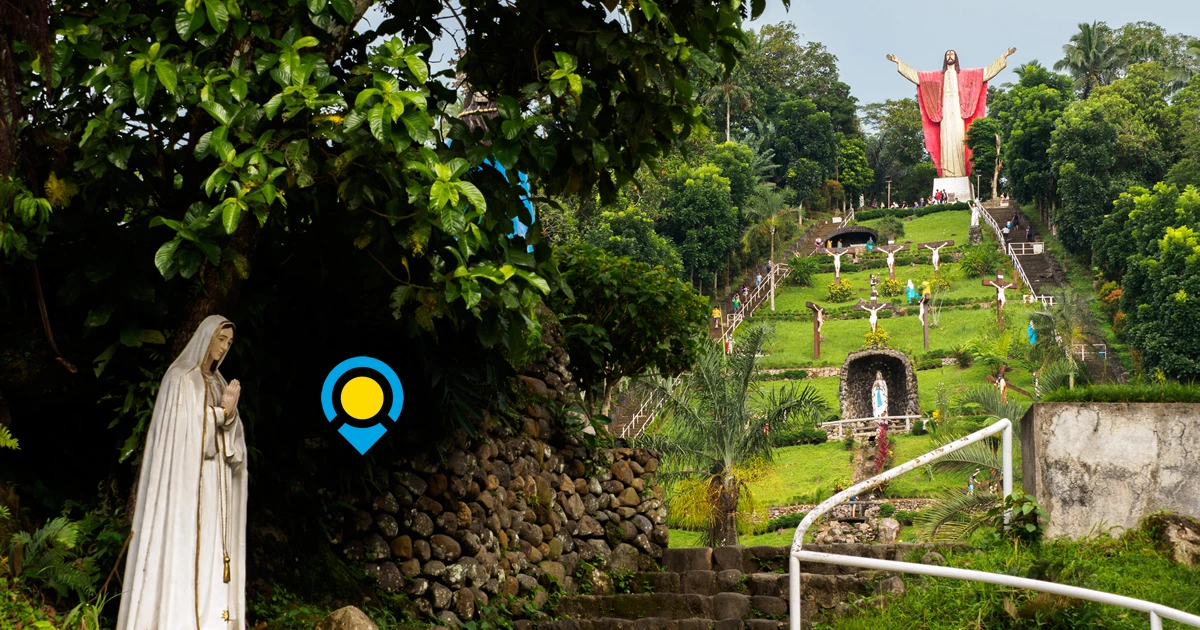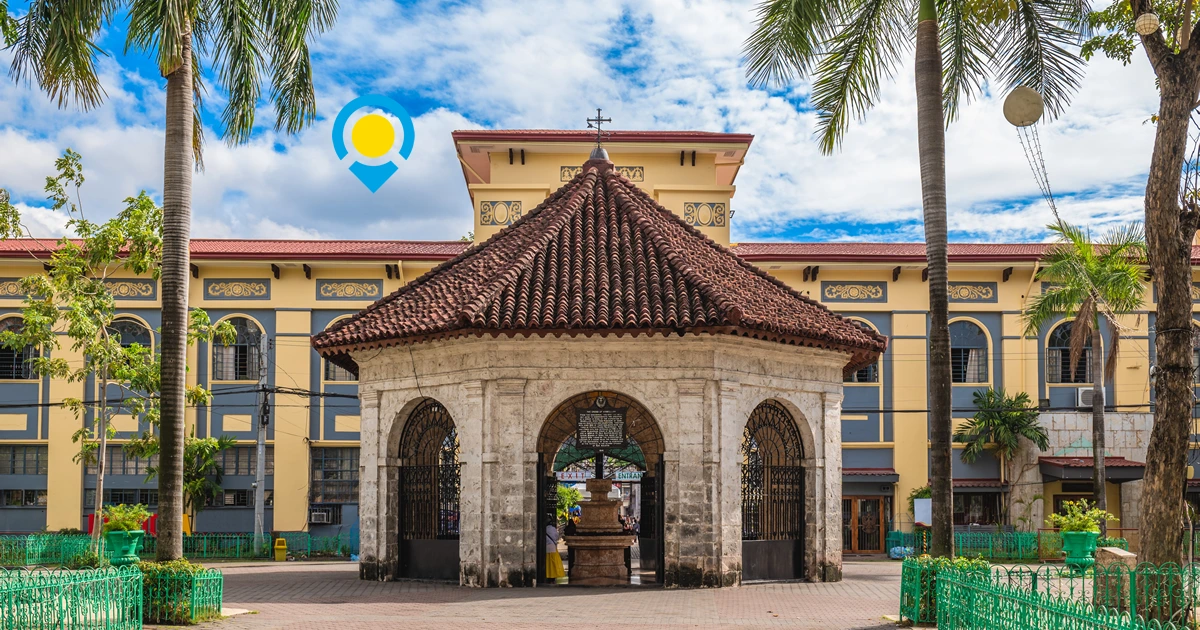
Quezon Province, located in the Calabarzon region of the Philippines, serves as a captivating blend of historical significance and natural charm. It is bordered by the province of Laguna to the east, Batangas to the south, and the Pacific Ocean to the north, making it strategically positioned for both coastal and inland tourism. With a total land area of approximately 8,706 square kilometers (3,361 square miles), Quezon boasts diverse topography that includes mountains, forests, and coastlines, which collectively enhance its appeal as a prime tourist destination.
The province is named after the first President of the Philippines, Manuel L. Quezon, who is also a significant figure in Philippine history. His contributions to the country’s independence have imbued Quezon Province with cultural and historical relevance, as visitors can explore various landmarks and heritage sites commemorating his legacy. The rich cultural tapestry is further woven through traditional festivities, local cuisines, and handicrafts, which reflect the vibrant Filipino culture.
Quezon Province’s charm is amplified by its natural beauty, presenting numerous opportunities for ecotourism and adventure. Travelers are attracted to its pristine beaches, enchanting waterfalls, and lush landscapes, which provide a serene escape from urban life. It features a range of tourist activities, from hiking in scenic national parks to enjoying tranquil moments by the sea. Furthermore, the warm hospitality of the locals enhances the overall experience, making Quezon not just a vacation destination but a place steeped in rich traditions and warm community spirit.
As this overview illustrates, Quezon Province stands as a must-visit location for tourists seeking an enriching experience. The combination of geographical diversity, cultural landmarks, and stunning natural attractions firmly establishes Quezon as a compelling choice for travelers looking to explore the Philippines beyond its famous urban centers.
1. Kamay ni Hesus Healing Church
The Kamay ni Hesus Healing Church is a renowned pilgrimage site situated in the municipality of Lucban, Quezon Province, Philippines. This church attracts thousands of visitors each year, primarily because of its compelling healing services and profound spiritual atmosphere. One of the most striking features of the church is the gigantic statue of the Risen Christ that stands majestically atop a hill, overlooking the entire landscape. Standing at 50 feet tall (or approximately 300 steps to reach its base), this statue not only serves as a remarkable landmark but also symbolizes hope and faith for many devotees.
Architecturally, the Kamay ni Hesus Healing Church exhibits a modern design combined with traditional Filipino elements. The church’s interior is adorned with intricate religious artwork, which enhances the spiritual experience for attendees. The soothing ambiance created by the stained glass windows and the serene decor invites visitors to engage in contemplative prayer, allowing them to connect with their faith profoundly. Surrounding the church is a well-maintained garden that features various religious imagery, adding to the overall charm of the site. This lush landscape serves as a perfect backdrop for quiet reflection and is often seen as a vital part of the pilgrimage experience.
Visiting Kamay ni Hesus can be transformative. Many individuals seek healing, both physically and spiritually, attending services and partaking in special events throughout the year, including the Holy Week activities preceding Easter Sunday. The church conducts regular healing masses, which attract both locals and tourists who report significant personal experiences and testimonials stemming from their visits. The combination of spectacular scenery, intricate architecture, and faith-based services collectively makes Kamay ni Hesus an essential stop for any traveler exploring the richness of Quezon Province.
2. Mount Banahaw
Mount Banahaw, often referred to as a sacred mountain, is a revered destination located in the Quezon and Laguna Provinces of the Philippines. This impressive stratovolcano rises to an elevation of 2,170 meters (7,120 feet) and is recognized not only for its challenging hiking trails but also its profound spiritual significance. The mountain is considered a holy site by many local religious groups and is often visited by pilgrims seeking spiritual renewal, prayer, and meditation.
A multitude of hiking trails weave through the lush landscape of Mount Banahaw, catering to adventurers of various skill levels. The most popular routes include the “Cristo Rey” and “Bañgkaw” trails, each offering stunning vistas, intricate rock formations, and opportunities to connect with nature. Hikers are often rewarded with views overlooking the picturesque countryside and the sprawling towns below. The biodiversity of the area is another remarkable aspect, with the mountain hosting numerous endemic species of flora and fauna. The surrounding forests are rich with age-old trees, medicinal plants, and a variety of birds, making it a haven for nature enthusiasts and eco-tourists alike.
The mountain’s allure also extends to its spiritual dimensions. Many locals and foreign visitors frequently embark on a pilgrimage, believing Mount Banahaw possesses healing powers. Legends and folklore abound, often attributing these powers to various sacred places and dwelling peaks within the mountain. These spiritual experiences, combined with the tranquility of the natural environment, offer visitors a unique opportunity for clarity and introspection, escaping the busyness of everyday life.
3. Villa Escudero Plantation and Resort
Located in the picturesque setting of Tiaong, Quezon Province, bordering San Pablo City, Laguna, Villa Escudero Plantation and Resort offers a unique blend of rich Filipino heritage and contemporary leisure activities. Established in the 1880s by Don Arsenio Escudero and his wife Doña Rosario Adap, initially as a sugar cane plantation and later converted to a coconut plantation, this estate serves as a reminder of the Philippines’ agrarian past while also providing a serene escape for tourists. As a well-known heritage site, Villa Escudero showcases its extensive collection of antiques, placing visitors in the midst of history.
One of the standout features of Villa Escudero is its distinctive dining experience. Guests are invited to enjoy meals served right by a stunning waterfall, specifically the Labasin Falls, a man-made waterfall. This creates a memorable ambiance that captures the spirit of the region. The sound of cascading water enriches the sensation of dining, making every meal a delightful event. The menu features traditional Filipino dishes, offering guests an authentic taste of the local cuisine, further enhancing their immersion into Filipino culture.
In addition to the dining experience, Villa Escudero provides a variety of activities that cater to travelers of all ages. Visitors can engage in bamboo rafting along the serene waters, offering a relaxing way to appreciate the plantation’s lush surroundings. Furthermore, cultural shows highlight traditional Filipino music and dance, presenting visitors with a vibrant glimpse of local customs. These performances not only provide entertainment but also educate visitors about the Filipino way of life, enriching their overall experience at the resort.
Overall, Villa Escudero Plantation and Resort is a must-visit destination for those seeking both relaxation and cultural enrichment. It offers a perfect combination of heritage, natural beauty, and engaging activities, ensuring a memorable experience for all its guests. This unique resort is an essential stop for anyone exploring Quezon Province, allowing tourists to connect deeply with the region’s history and culture.
4. Dunganan Falls
Dunganan Falls is one of the most stunning natural attractions in Quezon Province, captivating visitors with its pristine beauty. Nestled in the lush landscapes of Mulanay, Quezon, these falls offer a perfect escape for nature lovers and adventure enthusiasts alike. The falls cascade gracefully into a natural pool, creating a serene atmosphere that beckons travelers to enjoy a day surrounded by nature.
To access Dunganan Falls, visitors typically embark on a short hike through picturesque trails that wind through the dense foliage. The journey to the falls is as rewarding as the destination itself, providing hike-goers with opportunities to observe the diverse flora and fauna that thrive in the region. The most suitable time to visit Dunganan Falls is during the dry season, which usually spans from November to April. This period ensures that the paths are navigable, and the water flow is ideal for swimming and other activities.
Upon arrival at Dunganan Falls, visitors have various activities at their disposal. Swimming in the cool, clear waters is a popular choice, offering a refreshing respite from the tropical heat. For those seeking more adventurous options, trekking trails around the falls lead to higher vantage points, revealing breathtaking views of the surrounding landscapes. Birdwatchers and photography enthusiasts are also likely to find delight in the vibrant flora and wildlife that inhabit the area. Overall, a visit to Dunganan Falls promises a harmonious blend of relaxation and adventure, making it an essential stop on any tour of Quezon Province.
5. Quezon Memorial Park
Quezon Memorial Park stands as a significant historical and cultural landmark in Quezon Province, dedicated to the memory of Manuel L. Quezon, the first President of the Philippines. This expansive park, located in the heart of Quezon City, which is part of Metro Manila (and not Quezon Province itself), serves as a tribute to one of the nation’s prominent figures but also offers citizens and visitors a lush refuge amidst urban life. Its well-manicured gardens and manicured lawns create a serene environment ideal for relaxation and contemplation.
The park’s centerpiece is the Quezon Memorial Shrine, a towering monument that houses the remains of Quezon and his wife, Aurora. This historical monument has become a symbol of pride for the province and is often visited by families, school groups, and tourists seeking to learn about Philippine history. Visitors can explore the shrine’s historical exhibitions that highlight the life and legacy of the Quezon family and their contributions to the country.
Beyond its historical significance, Quezon Memorial Park is a hub for various recreational activities, attracting both locals and tourists alike. The park features walking and jogging paths, perfect for fitness enthusiasts and those looking to enjoy the outdoors. Playgrounds are available for children, ensuring a family-friendly atmosphere. Events such as cultural festivals and public gatherings are frequently hosted here, making it a vibrant center of community life.
In addition, Quezon Memorial Park encourages social interaction among its visitors, creating an inviting space for friends and families to gather. As a microcosm of Quezon Province’s rich heritage, this park not only honors historical icons but also fosters an appreciation for the natural beauty and culture unique to the area. Overall, a visit to Quezon Memorial Park is highly recommended for anyone exploring the various attractions in Metro Manila, particularly those interested in Philippine history.
6. The Enigmatic Mount Cotoc
Mount Cotoc, nestled in the untouched beauty of Gumaca, Quezon Province, presents itself as an enticing destination for hiking enthusiasts and adventure seekers. This lesser-known gem of a mountain offers a unique experience for those willing to venture off the beaten path. The journey to the summit is not for the faint-hearted; it is classified as a moderately challenging hike, requiring a good level of fitness and determination. The trail winds through lush greenery and vibrant flora, presenting a rich tapestry of nature that surrounds trekkers as they ascend.
The allure of Mount Cotoc lies not only in its climb but also in the rewards awaiting those who reach the summit. One of the most notable features is the panoramic view that greets hikers upon reaching the top. The breathtaking scene encompasses the vast landscapes of Quezon Province, with valleys and neighboring mountains stretching as far as the eye can see. The sight is particularly enchanting at sunrise or sunset, when the sky transforms into a palette of vivid colors, adding to the mountain’s mystique.
Beyond the summit, Mount Cotoc is surrounded by several points of interest that enhance its allure. Adventurers can explore nearby waterfalls, which provide a refreshing respite after a strenuous hike. Additionally, the surrounding local communities offer a glimpse into the rich culture and traditions of the area, making it an enriching experience for visitors. If you are seeking an adventure that combines physical challenge with natural beauty, Mount Cotoc stands as a must-visit destination in Quezon Province, offering everything from serene landscapes to thrilling hiking experiences.
7. Sariaya’s Heritage Houses
Sariaya, a charming town in Quezon Province, is renowned for its rich historical fabric that is beautifully illustrated through its heritage houses. These ancestral homes, which date back to the Spanish colonial period, showcase a blend of various architectural styles such as Baroque, Neoclassical, and Art Deco, each reflecting the socio-economic status and artistic sensibilities of their former inhabitants. The ornate details and intricate designs of these structures not only tell tales of the past but also represent the artistic legacy of the region.
Many of these heritage houses have been meticulously preserved, allowing visitors to get a glimpse of the rich cultural tapestry that Sariaya has to offer. As part of their preservation efforts, local tourism authorities have established guided tours that invite tourists to explore these impressive structures. These tours provide a valuable opportunity for visitors to engage with knowledgeable guides who share fascinating stories and historical facts about the families that once resided in these homes, as well as the architectural significance of the buildings themselves.
This emphasis on heritage preservation not only serves as a means of fostering community pride but also as a way to promote understanding and appreciation of local history among visitors. The guided tours often include a visit to the Sariaya Heritage Museum (which is located in the municipal hall, incorporating historical displays), where artifacts and exhibits further enhance the understanding of the town’s historical significance. Furthermore, the picturesque backdrop of the heritage houses provides an ideal setting for photography enthusiasts interested in capturing the essence of Sariaya’s architectural beauty.
For those with an interest in history, culture, and architecture, a visit to Sariaya’s heritage houses is an enriching experience. The blend of artistic legacy and historical depth found within these homes makes Sariaya a must-visit destination in Quezon Province, allowing tourists to create lasting memories while delving into the unique narrative of this vibrant community.
8. San Juan’s Beaches and Surf Spots
San Juan, located in Quezon Province, is renowned for its stunning beaches and vibrant surf spots, making it a prime destination for beach lovers and enthusiasts of water sports. The town’s coastline is dotted with beautiful sandy shores that not only attract tourists but also the attention of surfers from all corners of the globe. The most famous beach in San Juan, Quezon, is Laiya, which offers a long stretch of white sand and crystal-clear waters, making it an ideal spot for sunbathing and relaxation. Laiya is particularly appealing due to its calm waves, which make it suitable for both beginners and seasoned surfers alike.
In addition to Laiya, San Juan boasts several other picturesque beaches such as Calubcub Bay and Subok Beach, where visitors can enjoy the scenic beauty and partake in various water sports. These beaches are perfect for those looking to indulge in activities such as kayaking, snorkeling, and beach volleyball. San Juan’s surf culture is palpable, especially during the peak surfing season, which typically runs from August to November. This period witnesses an influx of surfers eager to ride the waves that the region is famous for.
The surfing scene in San Juan is supported by various local surf schools and rental shops that cater to both novices and experts. They offer lessons and equip visitors with necessary gear, ensuring that everyone can safely enjoy the ocean. Beach bars and restaurants along the shores serve delicious local cuisine, providing a perfect end to a day spent under the sun. The combination of stunning natural landscapes and a welcoming surfing community solidifies San Juan’s reputation as a must-visit destination for anyone looking to experience the best of Quezon Province’s beaches and surf culture.
9. Cultural Festivals of Quezon
Quezon Province is renowned not only for its picturesque landscapes and historical sites but also for its rich tapestry of cultural festivals that encapsulate the unique heritage and vibrant traditions of the local community. Among the most celebrated festivals in Quezon is the Pahiyas Festival, which takes place annually in the town of Lucban every May 15. This colorful event is held in honor of San Isidro Labrador, the patron saint of farmers, and is characterized by the incredible creativity displayed by residents as they decorate their houses with an array of rice-based and agricultural produce.
The Pahiyas Festival showcases the ingenuity of the locals, who use intricate designs made from kiping (rice wafers), fruits, vegetables, and other materials to create stunning displays that adorn their homes. The vibrant colors and artistic presentations reflect the community’s appreciation for agriculture and their gratitude for the bountiful harvest. Tourists visiting during this time can immerse themselves in the lively atmosphere, featuring street parades, traditional music, and various booths offering local delicacies, making it a truly unforgettable experience.
Another notable festival in Quezon is the Niyogyugan Festival, held in the capital city of Lucena every August. This festival celebrates the province’s primary product, the coconut (niyog), and showcases its various uses through elaborate street dances, floats decorated with coconut-themed designs, and trade fairs featuring coconut products. The Higantes Festival, on the other hand, is famously celebrated in Angono, Rizal, not Quezon Province.
Travelers are encouraged to plan their visits to Quezon Province around these cultural festivals, as participating provides a deeper understanding of the region’s traditions and sense of community. Engaging in these vibrant celebrations allows tourists to connect with locals and appreciate the unique cultural identity of Quezon Province in a more meaningful way.
10. Jomalig Island
Jomalig Island, a remote yet captivating island municipality in Quezon Province, offers an untouched paradise for travelers seeking a pristine and secluded beach escape. Known for its golden sands and crystal-clear turquoise waters, Jomalig provides a refreshing contrast to the more crowded tourist destinations in the Philippines. Its tranquil environment and raw natural beauty make it an ideal spot for those looking to disconnect and immerse themselves in nature.
The journey to Jomalig Island is an adventure in itself, typically involving a long boat ride from Real, Quezon. This relative isolation has contributed to the preservation of its natural charm and serene atmosphere, making it a truly unique destination. Upon arrival, visitors are greeted by long stretches of unblemished coastline, perfect for leisurely walks, sunbathing, and swimming in the calm, inviting waters.
Jomalig is particularly famous for its unique golden-hued sand, which shimmers under the sun, creating a picturesque landscape that is perfect for photography. Beyond the beaches, the island also offers opportunities for exploring its lush interior, where small communities reside, providing a glimpse into the simple, laid-back island life. Visitors can engage with friendly locals, sample fresh seafood, and experience genuine Filipino hospitality.
For those interested in camping, Jomalig offers several spots where visitors can pitch tents and spend the night under a blanket of stars, adding to the island’s raw, adventurous appeal. The island’s minimal light pollution also makes it an excellent location for stargazing. Jomalig Island is a testament to Quezon Province’s diverse natural attractions, offering a truly unique and unforgettable escape for those willing to venture off the beaten path.
Concluding Thoughts
Quezon Province truly offers a multifaceted travel experience, catering to various interests with its rich tapestry of historical sites, natural wonders, and vibrant cultural celebrations. From the spiritual pilgrimage to Kamay ni Hesus and the challenging ascent of Mount Banahaw, to the serene heritage of Sariaya and the adventurous beaches of San Juan, the province is a testament to the Philippines’ diverse appeal. The unique charm of Villa Escudero and the secluded beauty of Jomalig Island further enrich the visitor’s journey.
Embracing the local culture through its lively festivals, such as the colorful Pahiyas, provides an immersive experience into the heart of Quezon’s traditions and the warmth of its people. The province encourages a deeper appreciation for both its natural environment and its historical legacy.
Whether you seek spiritual renewal, outdoor adventure, cultural immersion, or simply a tranquil escape, Quezon Province promises an unforgettable journey. Its strategic location, coupled with its abundance of attractions and genuine hospitality, makes it an essential addition to any travel itinerary in the Philippines. Plan your visit to Quezon Province and discover the captivating blend of heritage and nature that awaits.




